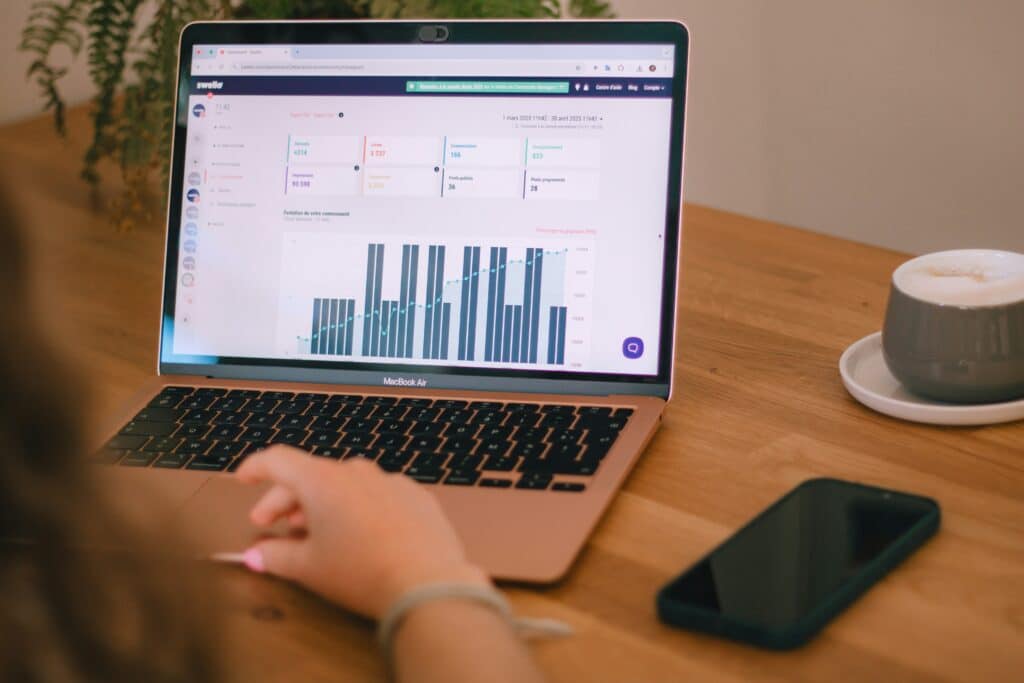Digital signage and displays are no longer static. They’ve evolved into intelligent tools that can react to real-time events, automate updates, and provide audiences with dynamic, relevant content. One of the most effective ways to unlock this potential is by integrating live data into your digital screen strategy.
Whether you’re displaying train arrival times, sales figures, or live weather updates, real-time information transforms digital signage and displays from passive media into an active communication channel. This blog explores the benefits of live data, how to implement it, and examples of how it can benefit when in action.

Benefits of Real-Time Information
Integrating real-time data into your digital signage display offers several practical advantages:
- Improved Relevance:
Content that updates in real-time remains timely and relevant. For example, a retail digital screen showing live stock levels or flash sales keeps customers informed and engaged in the moment. - Enhanced Engagement:
Audiences are naturally drawn to content that changes. Live sports scores, social media feeds, or news tickers provide a reason for people to stop, look, and interact with your digital signage display. - Operational Efficiency:
Automating content updates saves teams valuable time. Instead of manually uploading new information, data feeds allow digital signage and displays to update automatically based on preset rules or triggers. - Competitive Edge:
Brands that provide live, personalised content stand out in crowded environments, whether it’s a corporate lobby, transportation hub, or university campus. Digital signage displays help deliver that edge with real-time precision.
Data Sources and API Integrations
The backbone of live data integration is your data source. Typically, this data is pulled into your digital signage display system using APIs (Application Programming Interfaces), which allow platforms to “talk” to each other.
Example #1: Weather and Travel Updates
One of the most common integrations is real-time weather. A digital screen in a hotel lobby might pull data from the Met Office API to show hourly forecasts. Similarly, airports and train stations can use transport APIs to display live arrivals, delays, and platform changes on digital signage displays.
Example #2: Internal Dashboards for Teams
Corporate environments often use digital signage and displays to surface internal KPIs. By connecting to tools like Power BI or Google Sheets, teams can display live dashboards tracking sales performance, customer feedback, or project progress across different departments.
Learn more about setting up TV dashboards for your business using real-time data.
Example #3: Social Media and Event Feeds
For events and retail spaces, integrating live social media posts or event updates can add a layer of excitement. Digital signage displays can pull tweets, Instagram posts, or attendee check-ins in real-time, turning your audience into part of the content experience.
Designing Dynamic Content
When using live data, design plays a crucial role in maintaining clarity and usability. Real-time content should be easy to skim, well structured, and consistent with your brand guidelines. Digital signage and displays that are well-designed ensure that live updates are both functional and visually appealing.
Prioritise Readability:
Use large fonts, clear formatting, and a high-contrast colour palette to ensure live updates are legible at a glance, even from a distance on your digital screen.
Balance Motion with Clarity:
While animated transitions can draw attention, too much motion can be overwhelming to viewers. A smooth data refresh (e.g. every 30 seconds) is often more effective than a constant flicker of changing content on your digital signage display.
Create Zones for Data:
Divide your digital screen layout into content zones. This helps you to structure information logically; for example, main announcements in the centre, live weather on the side, and ticker updates at the bottom of your digital signage display.
Fail Gracefully:
Sometimes, a data source may go offline. Ensure your digital signage display includes fallback content or messaging so your signage remains informative even during brief outages.
Case Studies of Live Data Implementation
To bring this to life, here are a few real-world examples of how live data can be used effectively in digital signage and displays:
- Manufacturing Plant Dashboard
A UK-based manufacturer installed digital screens across its production floors. By integrating with internal systems, the displays showed real-time machinery performance, output rates, and shift schedules. This helped teams respond faster to delays and boosted productivity using digital signage displays. - University Campus Signage
A university deployed digital signage displays across campus to show live timetable changes, room availability, and bus schedules. The system pulled data from both internal scheduling software and local transport APIs, improving student satisfaction and easing congestion. - Retail Chain Promotional Boards
A fashion retailer integrated digital signage with its e-commerce platform to display live stock levels and pricing across stores. If a product went out of stock online, the corresponding item disappeared from in-store digital screens, reducing customer frustration and aligning expectations.
Conclusion
Live data is the secret ingredient that transforms your digital signage from a passive message board into a responsive, intelligent communication platform. By connecting your digital signage display to real-time data sources, from weather APIs to sales dashboards, you provide more value to your audience while reducing manual updates.
The good news? You don’t need a complex technical setup to get started. With the right signage provider and a clear understanding of your data goals, integrating live content can be incredibly straightforward and incredibly effective.
Ready to make your digital screen content smarter and more dynamic? Start exploring live data integrations and discover how much more your digital signage can do.
